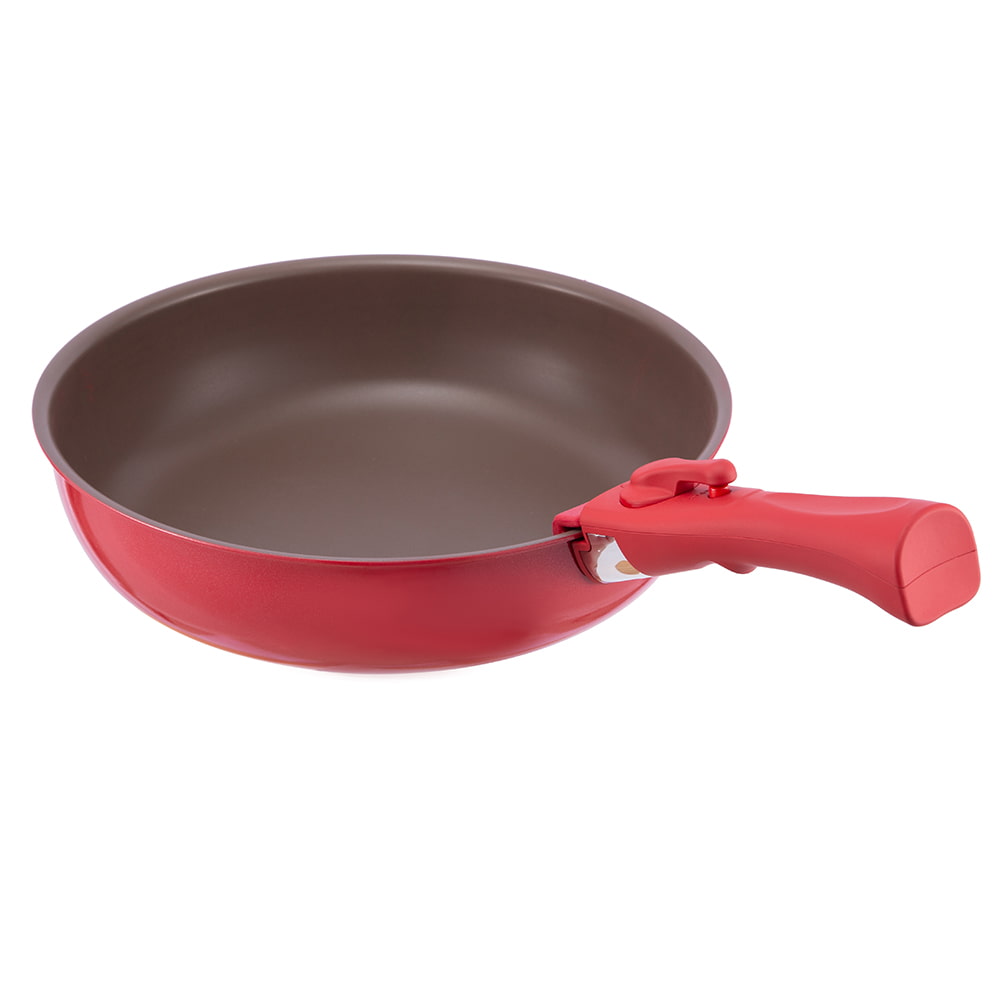The magic of stainless steel frying pans lies in their structure because of the materials used in their construction and how those materials interact to provide superior cooking performance. Let's delve deeper into why the structure of stainless steel frying pans is so crucial:
Multilayered Construction:
Stainless steel frying pans are typically constructed with multiple layers, often referred to as "clad" or "ply" construction. These layers are designed to take advantage of the unique properties of different metals.
Stainless Steel Exterior: The outer layer of the pan is made of stainless steel. Stainless steel is known for its durability, resistance to corrosion, and its attractive, easy-to-clean surface. It gives the pan its aesthetic appeal and ensures it can withstand the rigors of everyday cooking.
Aluminum or Copper Core: The key to the superior heat distribution of stainless steel frying pans lies in the core layer, which is typically made of aluminum or copper. These metals are excellent conductors of heat, meaning they quickly and efficiently transmit heat from the heat source to the cooking surface.
Aluminum Core: Aluminum is a lightweight and cost-effective material known for its exceptional heat conductivity. It ensures that the pan heats up rapidly and distributes heat evenly across the cooking surface.
Copper Core: Copper is an even better conductor of heat than aluminum, and it provides an even more rapid response to changes in temperature. Some high-end stainless steel pans have a copper core for maximum heat distribution control.
Stainless Steel Interior: The innermost layer of the pan is also stainless steel. This interior layer ensures that the cooking surface is non-reactive, which is crucial for preserving the flavor and quality of your food. Stainless steel does not react with acidic or alkaline ingredients, so it won't impart unwanted tastes or discoloration to your dishes.
Bonding Technique: The layers in a clad stainless steel pan are bonded together using various techniques, such as roll bonding, impact bonding, or diffusion bonding. These methods create a strong and inseparable connection between the layers, ensuring long-lasting durability and consistent heat distribution.
Even Heat Transfer: When you apply heat to the bottom of the stainless steel pan, the aluminum or copper core quickly absorbs that heat and distributes it evenly across the entire cooking surface. This even heat transfer eliminates hot spots and ensures that food cooks uniformly, regardless of where it's placed in the pan.
In summary, the structure of stainless steel frying pans, with their multilayered construction incorporating aluminum or copper cores, is designed to overcome stainless steel's natural limitations as a heat conductor. This construction allows for rapid and uniform heat distribution, making stainless steel frying pans a versatile and indispensable tool in the kitchen. The combination of durability, non-reactivity, and precise heat control makes them a favorite among professional chefs and home cooks alike.
 No. 1, Jingwei Road, Yangcheng Lake Town, Xiangcheng District, Suzhou City, China
No. 1, Jingwei Road, Yangcheng Lake Town, Xiangcheng District, Suzhou City, China [email protected]
[email protected] +86-13913553688
+86-13913553688
 search
search
 中文简体
中文简体 English
English русский
русский Français
Français Español
Español 日本語
日本語






-4.jpg)
-1.jpg)

-3.jpg)
-5.jpg)

-3.jpg)
-9.jpg)
-3.jpg)
-14.jpg)

